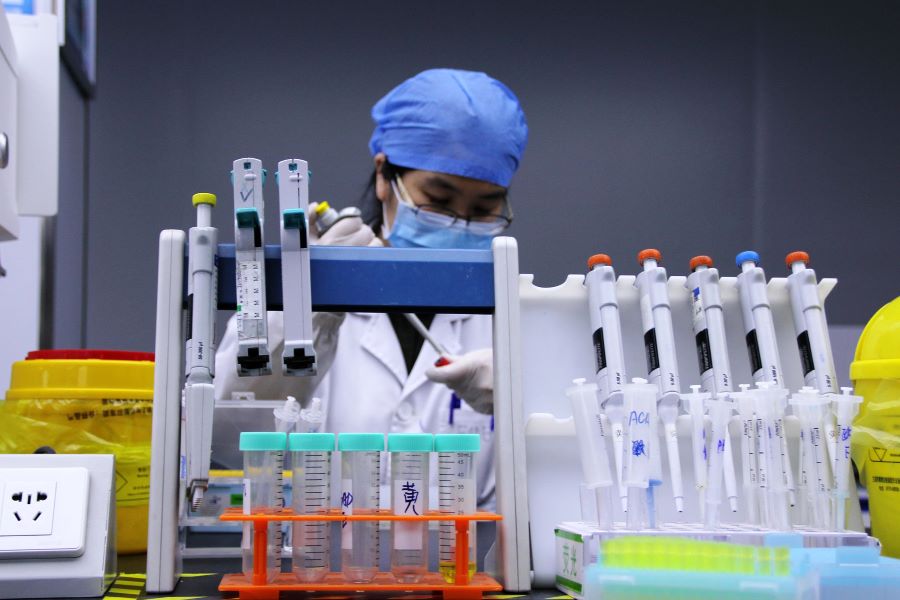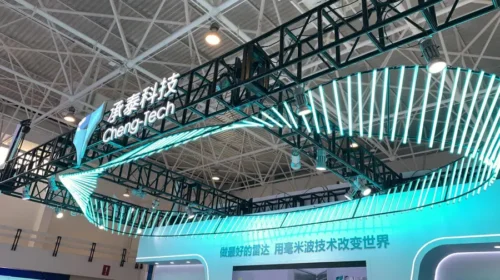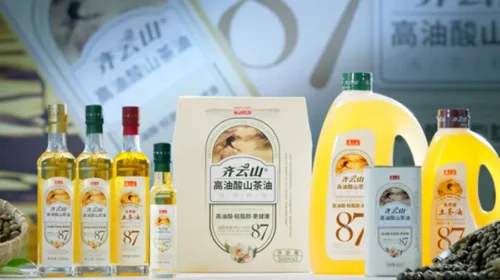As U.S. Takes Aim at China Drug Makers, Innovators Appear at Biggest Risk

Washington’s campaign to keep cutting-edge technology out of China took a new twist late last week with the addition of Chinese medical companies to U.S. blacklists
Key takeaways:
- Washington has blacklisted 37 medical-related companies, most of them Chinese, over concerns their skills and technology could be used to help the Chinese military
- Shares of companies that develop their own drugs are coming under more pressure than peers who license drugs from third-parties following the move
By Doug Young
In these troubled times of U.S.-China tensions, sometimes being a copycat has its benefits.
That’s the biggest takeaway for investors in China’s bustling drug sector, which has become the latest target of a U.S. campaign to block the export of its cutting-edge technologies to Chinese firms that may have military ties. The U.S. campaign dates back to the days of previous U.S. President Donald Trump, whose administration began using several government-maintained blacklists to block American companies from selling their products to China.
That effort has been mostly limited to tech companies so far, with heavily hobbled former telecoms superstar Huawei Technologies as the post child of what can happen when a company lands on one of the blacklists. But in a major development, the current administration of U.S. President Joe Biden has indicated it will expand the campaign to drug developers as well.
That’s where the copycat element comes in. The vast majority of the many publicly listed drug makers in China are essentially copycats that license mature drugs from other, mostly western, developers to sell in China. There are, however, a few companies that are developing their own drugs, a business that carries higher margins because such drugs can be licensed to others around the world, even though the risk of failure is much higher.
In this case, shares of the copycat group have held up relatively well amid the latest U.S. campaign. The innovators, which include the likes of BeiGene Ltd. (BGNE.US; 6160.HK; 688235.SS) and I-Mab (IMAB.US), have taken more of a beating over the last month as rumors of the U.S. intentions built up in the market. Here, however, we should also point out that these innovators had previously commanded a large premium to their more lowly-valued copycat peers.
All that said, we’ll take a closer look at what actually happened at the end of last week and discuss what may happen next, before finally looking at the latest valuations and pricing trends for some of the largest players.
The big news came in a Friday announcement from the U.S. Commerce Department, which said it was adding 37 companies to its “entity list.” Any U.S. company wishing to sell products or services to a company on the entity list must first get permission from Washington to do so. While Washington has approved some such sales, it has also blocked the sale of many of the most cutting-edge products and services to companies on the list.
In this case the new 37 entities weren’t only from China, with a handful of names also included from Georgia, Malaysia and Turkey. “We cannot allow U.S. commodities, technologies, and software that support medical science and biotechnical innovation to be diverted toward uses contrary to U.S. national security,” U.S. Secretary of Commerce Gina M. Raimondo said in a separate statement released the same day as the names of the newly blacklisted companies.
The new additions didn’t include any major publicly traded companies, which many investors had feared and had led to a selloff in shares of some of those companies in previous days. Instead, it appeared to include a large number of government-linked entities, most notably about a dozen directly tied to Chinese Academy of Military Medical Sciences.
Future Overhang
While BeiGene, I-Mab and others dodged a bullet this time, there’s no guarantee that they will be so lucky in the future. The campaign against tech companies began with Huawei and a few state-run entities, but later went on to net a growing number of up-and-coming private enterprises like surveillance equipment maker Hikvision (002415.SZ).
Facial recognition specialist SenseTime (0020.HK) become the latest company to get added to one of the lists a couple of weeks ago, forcing it to temporarily halt its plans for a highly anticipated Hong Kong listing. So it’s quite possible some of the many Chinese drug makers could end up on the list down the road.
All that said, the chances of makers of self-developed drugs landing on the list really do look higher than makers of drugs under licensing agreements. That’s because the latter group aren’t really doing any major innovating, and thus are far less likely to have any intellectual property or drug development abilities that could be used for cutting-edge projects by the Chinese military.
That reality means that investors in this sector would probably be well advised to understand whether the company whose shares they are buying is a true innovator, or simply bringing someone else’s drugs to the China market under a licensing agreement.
This divide has become more apparent over the last month, with self-developed drug makers’ shares taking a beating compared with their peers that rely on licensing deals. Both BeiGene and I-Mab shares are down about 30% since mid-November. Shares of CStone Pharma (2616.HK), another drug maker with some self-developed products in its pipeline, are down by a sizable but milder 16% over the same period.
By comparison, shares of Simcere Pharma (2096.HK), which is generally profitable and exclusively develops copycat generic drugs, are actually up 10% since mid-November. The similar but newer Everest Medicines (1952.HK) is down by a milder 9% over that period.
Here it’s worth noting that even after the selloff, BeiGene, I-Mab and CStone all trade at higher multiples than their copycat peers. From a price-to-book (P/B) perspective, BeiGene trades at the highest multiple of 7.5, followed by I-Mab at 4.9 and CStone at a more modest but still relatively high 3.9. Despite its far longer history and profit-making status, Simcere trades at a lower P/B of 3.6, and Everest – which has yet to generate any revenue – trades at a 1.2 that looks lowly but is still above the respectable 1.0 level.
At the end of the day, the innovators will probably continue to command a premium to their copycat peers, especially if they can successfully bring some of their products to market. But it’s also quite possible the valuation gap between these two sets of companies will narrow, especially if one or more of the big private names gets added to a U.S. blacklist.
To subscribe to Bamboo Works free weekly newsletter, click here






